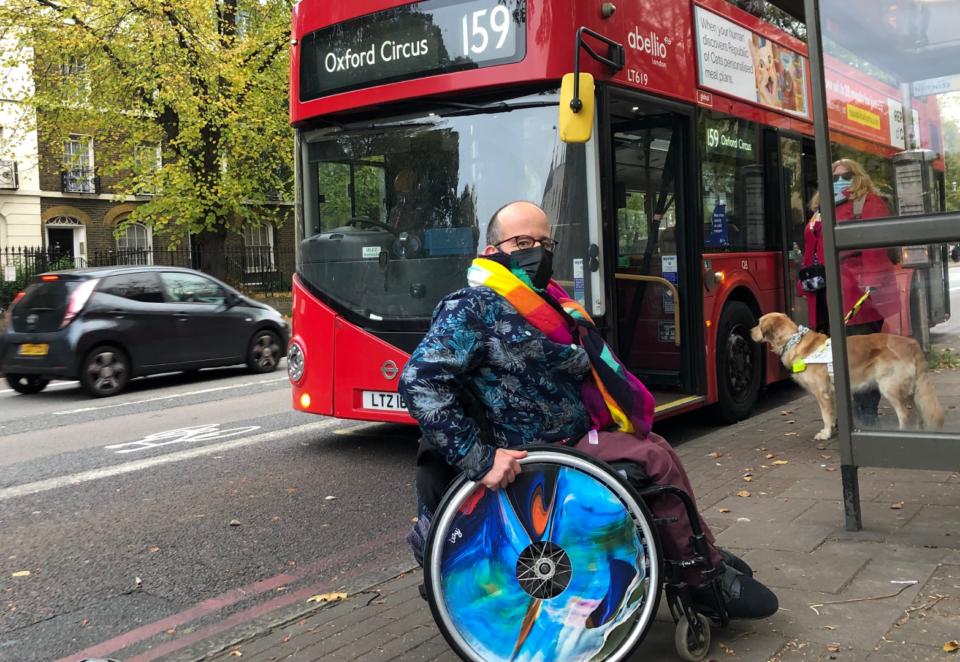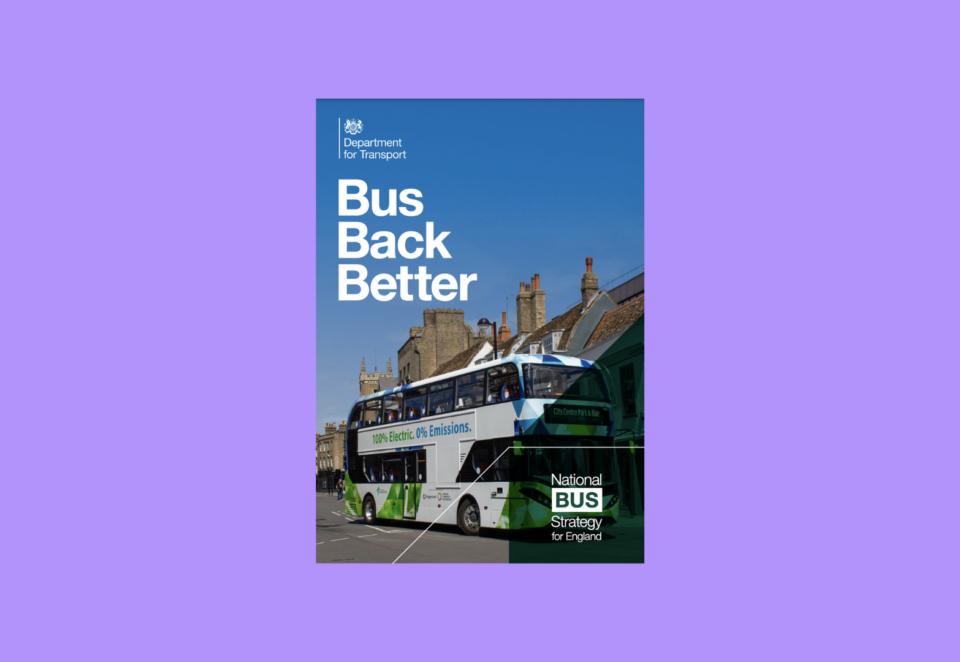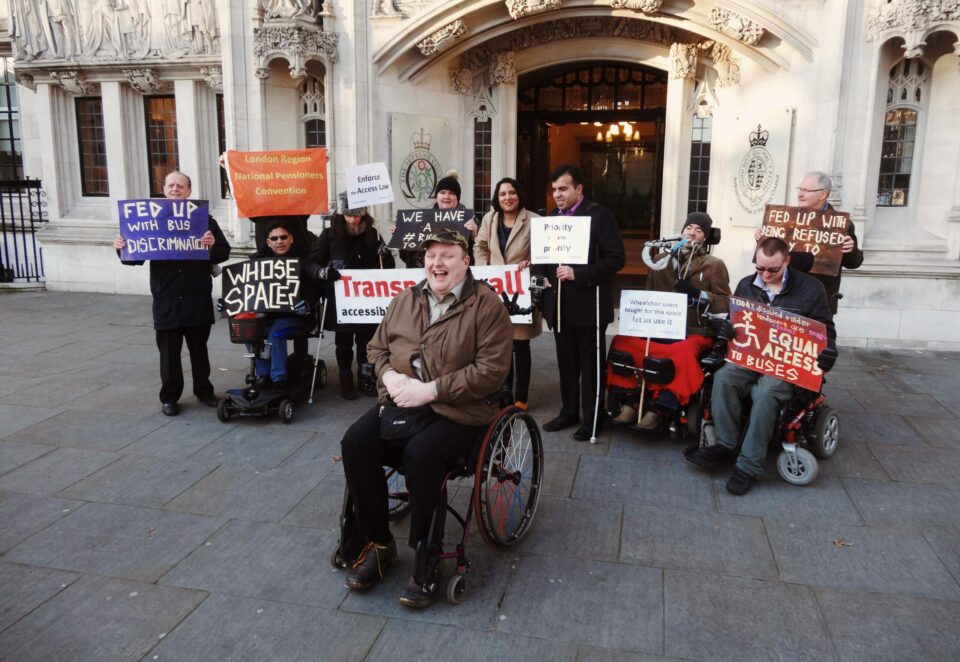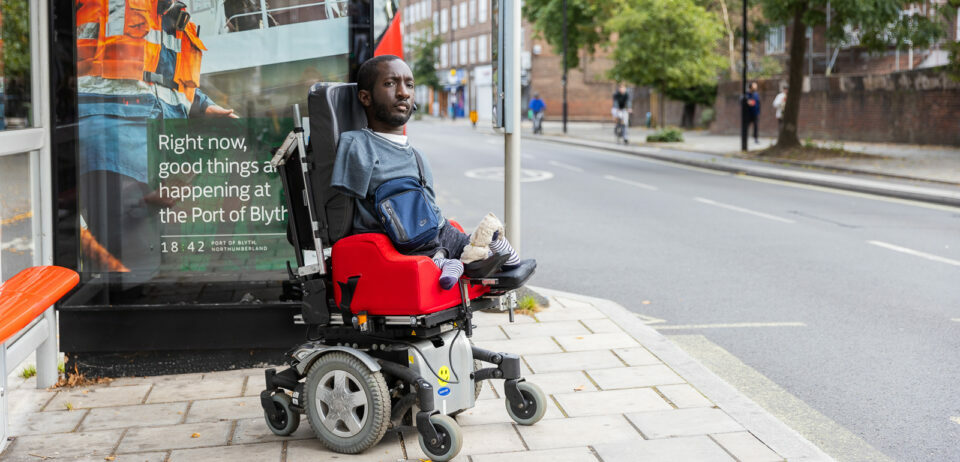
Policy background
Government statistics show that disabled people make a greater proportion of our trips by bus than non-disabled people (5% compared with 3%), demonstrating the crucial role the bus plays as the often only accessible form of public transport available (Department for Transport).
- Roughly 1 in 10 local bus services were axed in 2022, equivalent to more than 1000 registered routes. (Guardian) This is likely to disproportionately impact disabled people, especially those in rural areas with fewer alternative transport options.
- Only 30% of buses in England outside of London provide audio-visual information to passengers. (Department for Transport)
- The percentage of bus complaints that relate to accessibility increased between 2016/17 and 2021/2022 (Department for Transport)
Barriers to buses for disabled people
- 51%
- experience issues with priority spaces and seating.
- 41%
- experience negative behaviours and attitudes from drivers.
- 49%
- say overcrowding is a barrier to using the bus.
- 13%
- said they were unable to use buses at all.
51% of respondents experienced issues with priority seating and spaces such as seats being occupied or not clearly defined, or there being too few. In these instances, disabled people reported being left waiting until a vehicle with a free priority seat/space arrived, adding to journey time and uncertainty. Having to ask for a seat or space to be vacated can lead to conflict with other passengers, creating even more stress.
Despite wheelchair users having legal priority over buggies, disabled people tell us that drivers often do not let them on when there is a buggy on board, and that many parents do not stow the buggy when asked. This demonstrates that existing case lawxxxviii around priority seating is not widely understood or enforced, despite visible signage.
49% of respondents said that overcrowding had affected them on recent journeys, making it the second most common barrier to buses. Crowding can also mean that there is less priority seating available, and less space for those using mobility aids to manoeuvre safely.
11% of disabled people reported being unable to take their mobility aid with them on the bus, either due to services not accommodating them or because of the stress involved.
40% of respondents experienced inadequate bus stops last year. Examples included a lack of seating, lack of shelter leaving people exposed to the rain and cold, inaccessible surrounding street space (such as cycle lanes cutting through ‘floating’ bus stops) and street clutter.
48% of respondents reported infrequent and unreliable services as a barrier to using the bus. Infrequent services disproportionately impact disabled people: we’re more likely to be prevented from boarding the first bus that arrives (due to barriers e.g., priority space being taken) so a longer wait between buses impacts us more.
43% of respondents felt that the bus takes too long compared to other modes. 34% of respondents also report having no bus stop near to their home or destination. This not only increases the time and energy disabled people expend getting to the stop, but also increases exposure to barriers along the pavement that could further disrupt the journey. Similar problems are presented by interchanges, which 27% of participants reported as a barrier; every interchange is another opportunity for a driver to turn you away, for there to be no priority seating, for the bus to be overcrowded, or for the service to be delayed.
41% of respondents experienced negative attitudes and behaviour from bus drivers. People told us about times when the bus driver failed to abide by existing codes of practice, suggesting that while there are accessibility regulations and driver training in place, these are inadequate, forgotten or ignored.
35% of respondents experienced discriminatory behaviour from other passengers, ranging from laughing, tutting, and rude remarks, all the way to harassment and hate crime.
Both these elements may contribute to 22% of respondents having fears around their personal security while using the bus.
37% of respondents reported the risk of catching Covid-19 from other passengers as a barrier to travelling by bus. This is said to be exacerbated by overcrowding, with some people telling us they use the bus much less frequently since the mask mandate has been lifted.
37% of respondents experienced a lack of real-time information while using buses last year, meaning live updates such as delays, cancellations, diversions, and vehicle faults (e.g., broken ramps) are not being clearly communicated. 21% of respondents said the information that was provided was not available in both audio and visual formats.
Despite almost all buses being certified as compliant with accessibility regulation, the fact that 28% of respondents experienced issues with ramps shows these certifications are insufficient. Participants reported issues including mechanical faults such as ramps getting jammed, and drivers deploying ramps incorrectly (for example, not ‘kneeling’ the bus).
Our research and work on buses

Cutting London’s Buses would be a disaster for disabled people
Our response to Transport for London's consultation on cutting and reducing bus services. We explain why we strongly oppose the plans and what the impact will be on 1.2 million disabled Londoners.

The Government have published their National Bus Strategy: what does this mean for disabled people?
We take a look at the Government's new Bus Back Better strategy and work out if it's good news for disabled passengers.

Paulley’s appeal upheld by Supreme Court
Today marks a significant step forward for the rights of wheelchair users to have priority use of the priority space on buses – after Doug Paulley’s appeal was upheld by the Supreme Court.


Support us
We can't do this without your support. Take action, give what you can, or sign up as a member - and join our movement of disabled people fighting for a better future.

